This is the first in a series of interviews with people involved in setting up alternative, co-operative living arrangements – cohousing, community land trusts, housing co-ops, intentional communities etc. A group of us in London hope to gather information to help us start our own project. More on that here.
Dave Darby of Lowimpact.org / Noncorporate.org interviews Monica King of Bridport Cohousing in Dorset.
DD: What are you up to at Bridport Cohousing, and what’s happened so far?
MK: The project began in the early 2000s with Alan Heeks wanting to set up an eco community. He was on the board of the UK Cohousing Network. The project began as a cohousing project in Bridport, but the local authority weren’t supportive, so he went to do it in North Dorset – as the Threshold Centre, near Gillingham. That project is up and running – 17 homes in a retrofit farmhouse. He always wanted to start something in Bridport, as he comes from the area, and in 2008, he called a meeting with the local MP, Oliver Letwin, local authority housing people and planners, and he was encouraged to do it. So we count our birthday as that meeting in December 2008. The following March, an open meeting was held that I saw advertised, and went along. I thought it was a very good idea, and wanted to support it even if I never lived there. A month later I joined the steering committee.
Were you already living in Bridport?
No, my partner and I were living in Bristol. But we were coming to Bridport regularly to visit the Othona community, just outside Bridport. We liked Bridport a lot. We came down to join the monthly steering meetings. Some of the people on the steering group fell away for whatever reason, but in October we had our first 24-hour residential meeting to which everyone interested was invited. About 25 people attended. We were all asked questions to find where we were on a spectrum covering things such as our thoughts on community / living together, our attitude towards cars, shared meals – a whole load of things. The cars issue was the one with the greatest disparity – a few thought a car essential (including one disabled person), but most of us wanted to get rid of our cars if possible. Notes were taken, and we put together a ‘vision and values’ document.

Artist’s impression of the completed community.
How did you find people?
They were people who had been on the mailing list, after having responded to ads in local newspapers, fliers etc. Others had found us via word of mouth. After that meeting, a core group started meeting once a month. There were all-day training sessions, or liaising with architects and other professionals, usually held on a monday. It was all quite full-on. At some point we adopted sociocracy as our governance structure / decision-making process.
Do you still use sociocracy?
Yes. We’re looking at this now though, as some people who have joined recently have said there were too many meetings. We haven’t come across this before – everyone has been keen to meet and discuss what we might do. This is a departure, and so we’re having to work out how we might do things differently. We might have to change our membership process – we’re looking at Lancaster Cohousing’s joining process, which seems a bit more rigorous than ours. But sociocracy has proven very useful to work out contentious issues where there’s a wide range of views. The most contentious was whether we allow private lettings – i.e. allowing social investors to buy a home to rent out. The owner would only be able to get 80% of market rent for it, but will have bought it at 80% of the market value too – that’s what counts as ‘affordable’. Also, we were having trouble finding enough buyers, so if someone came along and said that they had money that they’d like to put somewhere useful – so they’d like to buy a house in Bridport Cohousing and rent it out to someone who couldn’t afford to buy one, and can’t get on the housing register. Some people were very accepting of this, as it would allow people to live there who wouldn’t have been able to otherwise, but others said that they wouldn’t like to live in a community that allowed buy-to-let, because there would be private landlords making a profit out of other people, just because they had money. So one of the interesting things about trying to make policies on contentious issues is that people are forced to examine their assumptions. As we’ve been doing this for nine years now, we’ve spent a lot of time discovering the bases of our assumptions – and that’s really helpful for living in cohousing. The fewer unexamined assumptions you have, the better. One thing we’re looking for in new members is self-awareness, which goes hand-in-hand with examining your assumptions. In the end, we did make a policy – that we would allow up to three properties to be bought by ‘social entrepreneurs’ for rent, but only if we hadn’t sold all the other properties; and the tenancies would have to be for at least five years. So that policy is there in the background in case we can’t sell all our houses (all our policies are listed on our website). Some people really love sociocracy, although others find it a bit more challenging – but it’s worked well, and it gets everyone involved.
What costs have there been so far, and where did the money come from?
Our training cost money. Some trainers gave us their time, and others charge up to £300 per day. We’ve had training on how to conduct meetings, we had an introduction to Myers-Briggs, the different kinds of members you need in an effective team, sociocracy training etc. We’ve used public places for meetings (although often we meet in people’s homes), and that has a cost involved. There are also admin costs, and we pay for a book-keeper. Big costs are architects, planning applications, and all the work that’s gone into bringing our scheme through a successful planning application – like landscape architects, environmental surveys etc. Money has come from a grant from Homes England and the local authority, and some from the 2% deposits that buyers put down after 3 months membership.
Where are you at now with the planning process?
We have planning permission for 34 homes and a common house. We’re applying for permission for another 19 homes on phase two of our build. We’re hoping that this will come through in time for us to do a contract with a construction company to build all 53 houses at the same time.
So nothing has been built so far?
No. We have a site, of which we’ve bought two-thirds. We won’t buy the final third until we’ve got planning permission on it. That’s the result of having a purchase option on the land, that’s conditional on getting planning permission. So if we fail to get planning permission, and fail again at appeal, we wouldn’t be obliged to buy the land. We got that purchase option on the basis of being a community-led development.
How much land do you have, how did you find it, and who owned it?
We have 7 acres – or at least we have 4.5 in the first phase, and 2.5 acres will hopefully come in the second. One of our professional advisors was at a self-build event, and the woman who owned the land spoke to him about her property. He then made contact with her land agent, and after a long and difficult process, the land agent spoke with us, and we started to draft the purchase option with her solicitor. We did eventually buy the land, but it was very difficult due to access issues. We had to cross hospital land to get access to our entrance. Liaising with the hospital about this took 5 years. They wouldn’t talk to us for 2 years, then it took a further 3 years, after which they wanted £600k for access. We didn’t have this, so they’ve now got 6 houses in the project for hospital staff, plus lots of our car parking spaces for their staff, plus we paid them £30k. So we eventually got to the point where we could buy the land, but we didn’t have the money, because the original group didn’t imagine that we would be the people who bought it. Our plan had always been to partner with a housing association, and that they would provide the money, do the build, keep some houses and sell some to us. We had 2 housing associations in succession who worked with us on that basis. We didn’t have the £250k required to buy the land, and so we put out a loan request. People were invited to put in a minimum of £1000 to enable us to buy the field. We offered 3% plus bank rate on the loan. Within 3 weeks, we had £260k.
That seems like quite a lot for 4.5 acres.
It’s just outside the development boundary, on the edge of Bridport. It’s costed at £8000 per unit, rather than per acre. Although it was agricultural land before we bought it, and agricultural land usually goes for around £8k per acre, if the land was inside the development boundary it would be worth a couple of million. The owner knew that we wanted to get an exception for planning permission for homes, and it’s in a prime position next to Bridport Community Hospital, so there was no way we could purchase it at the agricultural land price. It’s near to the Jurassic coast, people want to live around here, and there’s huge pressure for land for housing. The housing association were content with the price.

Picnic on the newly-purchased land.
What’s going to happen next?
At this stage we’re talking to a couple of housing association who we want to partner with, or we may just get a developer to do the development, then hand the leasehold of the housing association properties to a pension fund, and our members would buy the leasehold of the houses that were for sale. Our need to get it done is always pushing us, so we may take the path that can come up with the goods most quickly. We have to be careful that we don’t jump into something that’s not right for us, but as we’ve been going for over 8 years, we don’t want to run out of energy.
What are people’s reasons for wanting to do this?
Most of the people will have had some engagement in community living before. One ex-member said: ‘there are lots of aspects of community living I like, but I don’t want to have breakfast with 25 people’. Cohousing gives you the positive benefits of community without any lack of privacy. We’re proposing that we have 3 community meals per week – but they will be voluntary. Everyone has to take a turn at cooking once a month. Lots of people will want to get together for breakfast too – but it’s up to them. Nothing is expected.
So eventually, what will the project look like?
We’re on a slight hill that slopes up to the north, and there will be 53 houses grouped around a common house, with 3 perimeter parking areas. At the top of the site, a third of the land will be ‘amenity land’ with fruit trees and bushes and a camping area. There will be lots of trees. We’re next to a community hospital.
And all the homes will be built by a contractor? No self-build?
That’s right – although we want to build the common house ourselves.
Will the houses be ‘eco’?
As much as we can, but the priority is really living together rather than sustainability. But a lot of people are interested in sustainability, so they’ll probably be quite eco – and the sharing aspects will contribute to sustainability too. We’ll be having near-Passivhaus standards, so we don’t envisage that they’ll require too much energy for heating. And we’ll incorporate solar panels for some of the electricity. We’re in consultation with a group who are looking into the renewable energy options with us. We don’t know yet if the homes will be bricks and mortar, or maybe timber. That depends on the construction company we use, and the skills that their builders have. They’ll build the kinds of buildings we need, but the building materials may be up to them.
Are you looking for new members?
Always.
What do people have to do to get a home?
First you have to be a member – so there’s a £35 joining fee and £10 per month subscription. That covers our running costs. Then you’re expected to come to meetings and take part. Ideally, you’ll be living in Bridport, but if you’re living further afield, you’ll have to show that you can come to meetings and get involved. We can take a few people from outside the area, especially if they have relevant skills. But all of us – even those who’ve been involved for 9 years, have been working on the understanding that none of us is guaranteed a home. However, soon, when we’ve signed a contract with a builder, we start selling properties – providing a contract and taking a 10% deposit. At that point we’ll be publishing a brochure and undertaking a marketing exercise – but everyone has to come in via the membership process.
How much are the properties?
We’ll know the answer to that when we’ve signed a contract with a builder. But a ball-park figure is around £150k for a one-bedroom flat, £200k for a two-bed house, £240k for a 4-bed house.
Sounds reasonable – or is that because I live in London?
Exactly. But we are aiming for our prices to be 80% of market prices in Bridport for similar properties – which counts as affordable – but in the end, it will depend on how much we have to pay the builder. About half the properties will be to rent, via the housing association, and they’ll be 80% of market rents too – they’ll be for people on the housing register.
If you’re finding people from the housing register, how do you know if they’ll be the right kind of person for cohousing – i.e. happy to co-operate?
They’ll still have to go through the membership process – so they’ll have to get to know the group, and find out about cohousing as part of the process. They won’t automatically be able to become a member because they’re on the housing register, but also, they won’t be able to rent if they’re not. We retain the right not to grant membership to people we don’t think are genuinely interested in or suited to cohousing. We might be challenged legally on this at some point, and we’ll see what happens then, but this is a cohousing project, and so obviously we only want people who are interested in cohousing.
Who should people contact if they’re interested – in either buying or renting?
They can go to our website – it tells you how to become a member, how to find out more, and they can contact us from there. We also have a newsletter that people can sign up for.
How many people do you think will live there?
Well, 53 homes, say 2.5 occupants per home on average, so well over 100 people, which is quite big for a cohousing project in the UK. Either our sociocracy process will encompass all those people, or we might have to divide into 2 groups, sharing our common house.
What are your personal reasons for wanting to live in cohousing?
We’ve lived in community before, and we value community. We’re both introverts, but we also think that we need the stimulus of other people, or we could become a bit ‘odd’. Also, we appreciate a greener way of living – and although you can do that on your own, a much better way is to surround yourself with a community of people you know and trust. If society goes horribly wrong, there‘s not much you can do on your own. Even if you stock up on things you need, they can easily be taken from you. I’m not a ‘survivalist’, but I can also see that there are lots of threats to the system that may cause huge disruptions. In that case, I think it’s a good idea to be in a community-minded place – and we’ll have that with the cohousing group, but also it’s the case for Bridport generally.

What’s your legal / ownership structure, and why did you choose it?
We’re a benefit society (used to be called a community benefit company, but the nomenclature changed in 2014). That’s our legal set-up. And because we’re a benefit society, we can also be a community land trust, which isn’t a legal structure, it’s a ‘status’ – i.e. you can qualify for certain things and are seen in a certain light. CLTs are popular in Dorset.
There are 6 of us (plus a child) looking to start something that might house 10-14 people eventually – so tiny compared to your project; could we just all decide to apply to join your group instead?
Yes, but you’d have to be local. So you’d have to move here and rent (or buy somewhere) before applying, which is a bit of a risk, as you may not get in. I could see that joining an existing project could be quite attractive, rather than working everything out yourselves. That is, if you haven’t already decided where you want to live.
We’re finding that the most difficult thing is to work out what our legal structure will be. Any tips?
You could get Martin Field’s book – Thinking about Cohousing – that discusses the various options, although it’s quite old now.
Personally, I don’t want to be someone who moves to a town and helps to push house prices up and therefore locals out. I’d like to leave an affordable legacy, and preferably one that banks can’t make profit out of any more. I was thinking that a housing co-op would be best for that, but don’t know how founders would get their money back out – and if founders are worse off, then it’s not going to inspire other people to do it. It’s something I’ve got to look into more.
Yes, so any increase in the value of the property accrues to the community, not individual members. You’d like to aim for longevity of the community, rather than the increase in value that most people are looking for with housing transactions. You might want to look at the mutual home ownership model – used at LILAC in Leeds and Trelay in Cornwall. The beauty of that model is that the values of the properties rise and fall relative to local incomes.
I suppose that because I lived in a housing co-op for many years, I always lean towards that model, and haven’t thought much about other models. So it’s difficult to work out what questions to ask to help us decide about our own project.
We used our model, in partnership with a housing association, so that the housing association could help us fund it. It would have been very difficult without partnering with a housing association, but that may be changing now that the Community Housing Fund has come on stream. Your project is much smaller, and if you have financial resources you probably have a freer hand.
Can you cap the resale price of your units?
Yes, that’s in the rules of the CLT, which state that we can’t sell houses at more than 80% of their open market price.
Oh, that’s in your rules, not just something you decided to do?
Exactly. That’s why we got planning permission, because affordability is embedded in the rules of our CLT – so the Planning Committee know that we mean it. And if our CLT folds, we have to find another one to step in, or to pass on the assets to. So they also know we mean it in perpetuity. A developer is unlikely to be able to guarantee affordability, so wouldn’t have got planning permission.
OK, thank you Monica – that’s been very interesting. I hope this article helps you find more members, and I hope you get up and running soon.

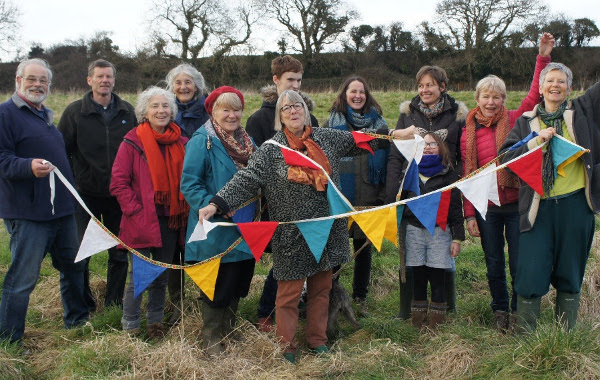
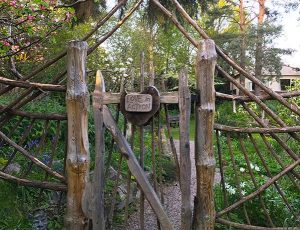
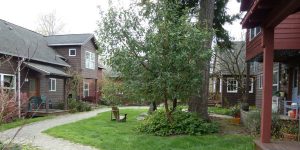


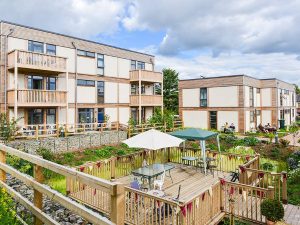
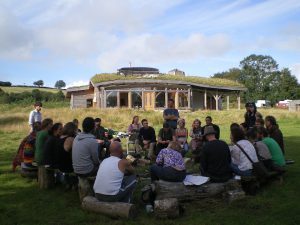
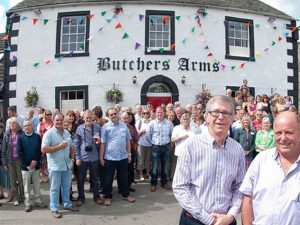
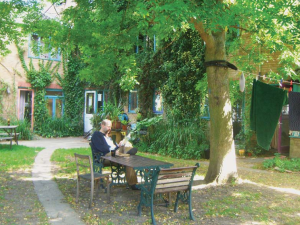
4 Comments
Hi,
It’s a shame this couldn’t have been a recorded interview, just audio or even a video with audio. It would be easier to listen to an article of this length rather than read it.
Is it possible that future interviews could be recorded? I may be able to help set up a system to be used for such purposes.
We have a huge list of very interesting interviewees lined up, and we’re looking into setting up podcasts, and even filming some discussions amongst a group of people, not just one-on-ones. We’re working with a film-maker – he’s building a new range of online courses with us, and trying to stop me saying ‘er…..’ and meandering all over the place during interviews. Maybe we have to bring slightly more professional interviewers in.
It’s interesting – when presented with a podcast and text of an article, I always go for the text. That way I can skip part, and skim to see if the whole article is what I’m interested in or not. I accept that a lot of people are the exact opposite though, and go for the podcast / video. Probably the majority – although I do hear from a lot of people who prefer text.
Hi Dave
I sold my house in Wales and moved to Bridport 18 months ago to be part of this group. I tried to get something going where I was, but soon realised that setting up a cohousing project needed a huge amount of time, expertise and comittment and a reasonably large number of core people who had the time and energy to move it forward.
Not a single regret about the move – this is an excellent project which fits with my personal visions and values nicely. I have become an active member of the group and am learning new skills all the time – finding it helps me with my personal development as a member of the community as well as being part of a team bringing a pioneering approach to a different model of housing provision. The development and construction industry currently mainstream in the UK needs to be challenged – taking the element of making profit from buying and selling houses is a radical move away from the current system.
While still in Wales and trying to start up a brand new project we came across http://www.radicalroutes.org.uk/ – these guys could be of help to you
Radical Routes is a network of housing and worker co-ops and Social centres whose members are actively working for social change in the UK.
You may well know their work but others reading this might not have come across them. Very helpful people to contact.
Good luck with your own project
lin x
Yes, Radical Routes are great. They also have a project whereby some rent paid to co-ops goes into a fund to help set up more co-ops. I hope to interview Cath from Radical Routes for the blog at some point – although she’s travelling around the States visiting co-ops over there at the moment (she hitched across the Atlantic on a sailing boat).